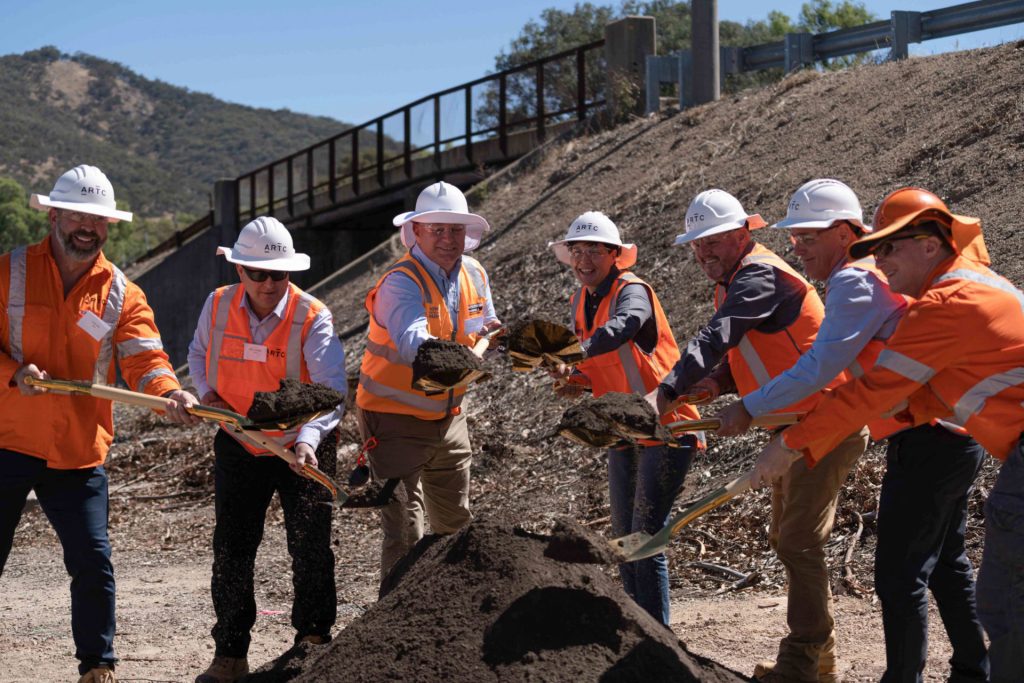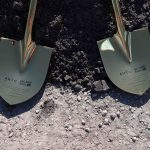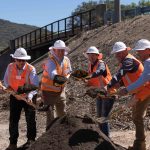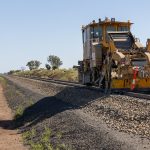 The Australian Rail Track Corporation (ARTC) started the major construction works for Tottenham – Albury rail section of Inland Rail in Victoria under a ceremony held in Glenrowan on February 1, 2023.
The Australian Rail Track Corporation (ARTC) started the major construction works for Tottenham – Albury rail section of Inland Rail in Victoria under a ceremony held in Glenrowan on February 1, 2023.
Inland Rail in Victoria will follow the upgraded North – Est Line running from Melbourne to Albury/Wodonga, which includes the enhancement of rail infrastructure to allow for double-stacked freight trains. All track works for the project were completed in April 2021, bringing the North East Line up to a Victorian Class 2 track performance standard, in line with other long-distance regional rail lines in Victoria. The Australian Government has committed AUD 235 million (USD 163 million) to this project.
Under a AUD 200 million (USD 138.7 million) contract awarded in October 2022, McConnell Dowell has started the construction on the first Inland Rail sites in Victoria. The company will construct new bridges, station precincts, undertake track realignment and lowering as part of this first tranche of work at Seymour, Glenrowan, Wangaratta and Barnawartha North.
The project on Tottenham to Albury section covers the upgrade of 305 km of existing rail corridor between metropolitan Melbourne and the Victoria-NSW border at Albury-Wodonga.
Due to its complexity, the project is broken into two phases. The first one involves the Beveridge – Albury section covering works at 12 sites along the North East rail line from Beveridge, about 40 km north of Melbourne, to Albury. McConnell Dowell has been appointed the contractor on the first four projects out of the 12, at Seymour, Barnawartha North, Glenrowan and Wangaratta. The Beveridge – Albury tracks need to be modified to provide sufficient height and width clearances to support the safe running of double-stacked freight trains. Work includes upgrades to existing structures and increased clearances along entire corridor.
The second phase of the project involves works south of Beveridge. This phase is on hold and the governments of Victoria and Australia are working on the location and development of intermodal terminals in Victoria.
Businesses in Victoria are already benefitting from the delivery of Inland Rail with a total of 58 contracts worth more than AUD 269 million (USD 186.6 million) for services and the supply of materials to the project. The Inland Rail in Victoria will bring the state an efficient freight transport system and investment opportunities expected to boost the state’s potential output by AUD 6 billion (USD 4 billion) over the first 50 years of operation.
The commencement of work on the Tottenham – Albury rail section means that construction is in progress for 2 of the 3 states along the Inland Rail route.
Inland Rail has already completed the Parkes – Narromine section in New South Wales which is now into operation. The project covered the upgrade of 98.4 km of existing rail track and the construction of a 5.3 km section near Parkes (known as the North West Connection). Following the completion of this section, a direct link has been created between south-east Queensland, Adelaide and Perth via the Parkes north west connection. In addition, in New South Wales, major work is underway on the Narrabri – North Star section covering the upgrade of 184 km of existing rail corridor and the construction of a 2 km section near Moree, in northern NSW. This project is also split into two phases the first one including the upgrade of a 171 km section and the second phase between Moree and Camurra involves the upgrade of a 13 km section (between Alice Street, Moree across the Mehi-Gwydir floodplain to the eastern side of the Moree Gun Club) and the construction of the 2 km connection Camurra, north of Moree. Narrabri to North Star crosses the three local government areas of Gwydir, Narrabri and Moree Plains.
The 1,700 km Inland Rail corridor will cross Victoria, New South Wales and Queensland connecting Melbourne and Brisbane. The modernisation and construction work for the first section started in 2018 and the project is expected to be completed in 2027. The project will cut the distance between Melbourne and Brisbane by 200 km with a transit time of less than 24 hours.
Share on:






